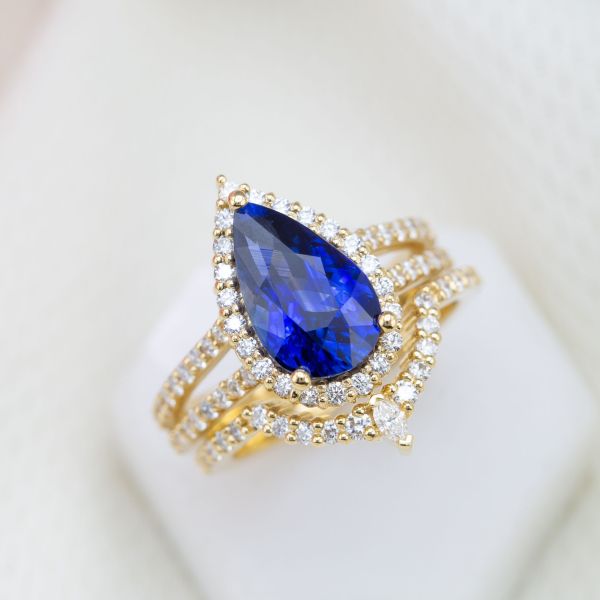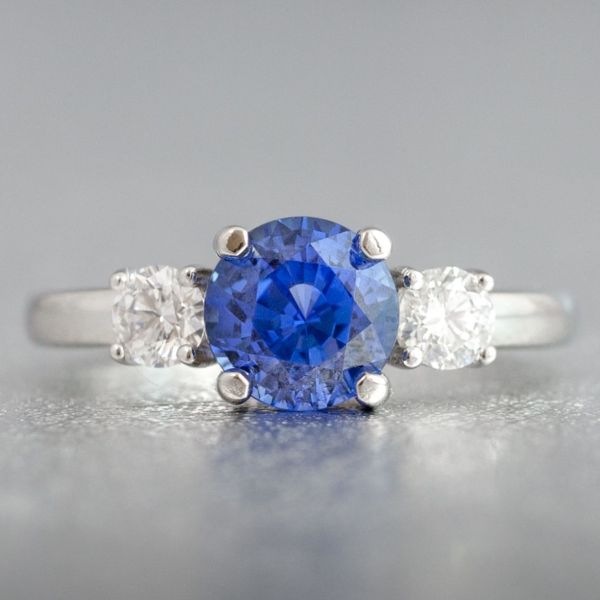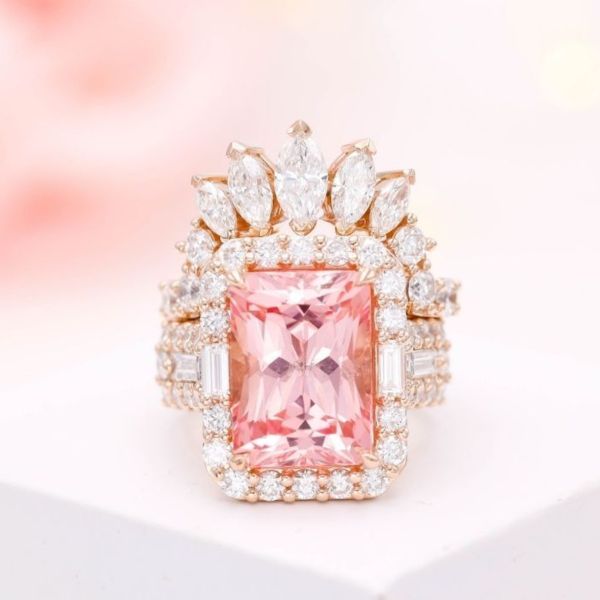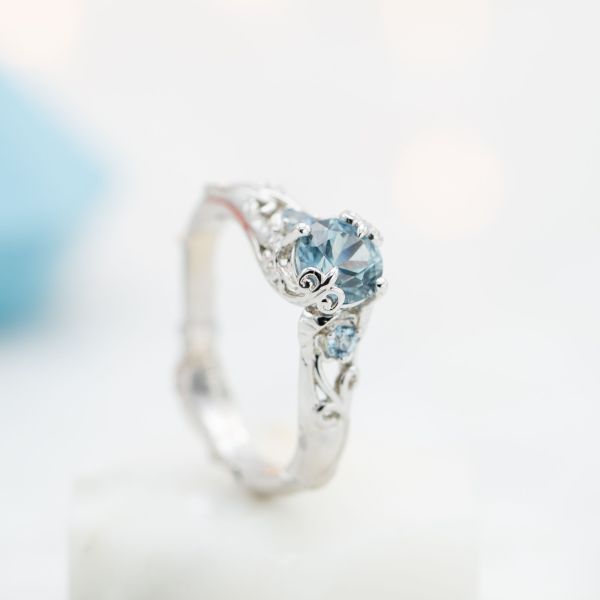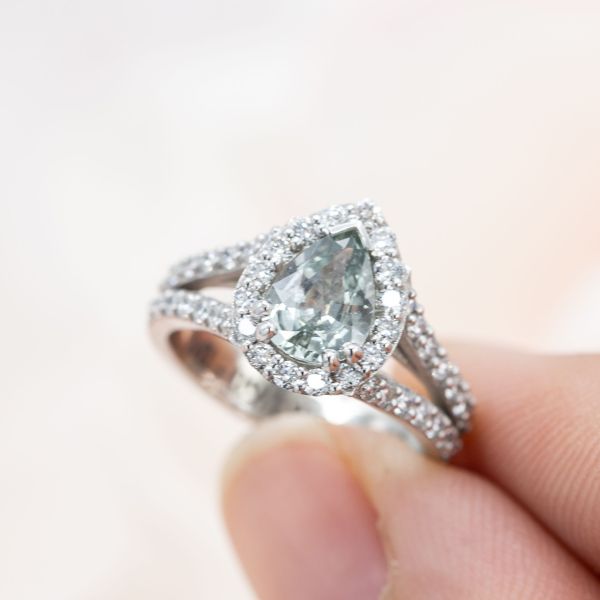Gemstone Knowledge
Should You Buy a Heat-treated Sapphire?
Heat treatment may lead to spectacular color and clarity for sapphires, but does it impact the gemstone’s value?
Why are sapphires heat treated?
Roughly 90-95% of sapphires on the market today are heat treated, so finding one that hasn’t undergone treatment is a rarity. There are a few reasons why a sapphire may require heat treatment, but they mostly boil down to improving a sapphire's color or clarity (or both!).
To improve color
To say a sapphire is “heat treated” means they are exposed to high temperatures in a controlled environment. Temperatures can reach up to 1800℃ as laboratories attempt to produce more vivid shades and create uniform color throughout the stone. Additionally, heat treatment can improve dull sapphires that are too milky by darkening, lightening, and even deepening their original color.
To eliminate or enhance inclusions
Heat treatment also dissolves “inclusions” or imperfections often found in gems of the corundum family, such as sapphires and rubies. By removing unwanted inclusions, heat treatment allows experts to bring out the best in every sapphire they handle. In reality, heat treatment isn’t much different from the natural formation process sapphires undergo deep within the earth. Consider heat treatment an acceleration of Mother Nature’s modus operandi that produces brighter, clearer sapphires.
In addition to removing imperfections, heat treatment can actually improve desirable inclusions in sapphires. With a little heat treatment, you can enhance asterism—a starburst pattern that spreads across the stone’s center—to produce a stellar sapphire that looks as though it was plucked from the night sky!
Does heat treatment impact a sapphire’s value?
Because a majority of sapphires on the market are heat treated, the process really doesn’t impact their value. However, that’s not to say high-quality, natural stones aren’t more expensive, but this is typically due to their rarity. For instance, if you had two sapphires that were identical in color, cut, clarity, and carat but one was natural and the other heat treated, you could expect a price increase of 15-20% for the natural stone.
We recognize there are gemstone enthusiasts who sing the glories of “natural” sapphires and other gems, but heat treatment does not make a sapphire any different from an untreated gem. The heated gem has just undergone an extra step in the process for enhanced clarity and refined hue, tone, and saturation.
Is the sapphire’s durability impacted?
Heat treating a sapphire does not impact its durability, as it does not change the fundamental structure of the stone. While the sapphire may become less hazy or richer in color, rest assured the gemstone is still a durable center stone choice that you can expect to wear for a lifetime. And the effects of heat treatment are permanent, so your sapphire engagement ring will remain as beautiful as the day you receive it for decades to come.
Is heat treatment safe for me?
Fear not: heat treatment processes used today are completely safe and do not impact your health or wellbeing! Modern treatments do not require chemicals or radiation that could harm wearers, and heat treatment is one of the safest ways to improve a sapphire’s natural features.
Does heat treatment impact only blue sapphires?
Nope! As we mentioned above, almost all commercially available sapphires undergo some level of heat treatment. While intense hues and improved clarity are usually the goal, thermal treatments can also remove color zoning, which is when sapphires contain bands of assorted colors. Heat treatments are one of the main reasons we enjoy an unbelievable variety of shades in sapphires today.
Sapphires of different colors
While sapphires of all colors can undergo heat treatment, some colors may require different temperatures to achieve the intended look. For instance, Madagascar pink sapphires require a much lower temperature of roughly 400℃ when compared to their blue siblings.
In contrast, sapphires with asterism need a staggering 1200 to 1600℃ to improve their striking star pattern! Overall, the temperature depends on what exactly needs to be removed or enhanced within a sapphire.
Lab-created sapphires
In a laboratory setting, experts can produce sapphires that are chemically and physically identical to natural stones, and it’s tough to distinguish between them. Because they’re man-made, it’s easy to assume these gems don’t require the extra effort of heat treatment, but that’s not quite the case!
It’s true that lab-grown sapphires do not contain the same inclusions as natural stones, and their imperfections are often harder to spot. This is due to the controlled lab environment, which eliminates any outside minerals and other causes of inclusions. However, they may still benefit from heat treatment for a little color correction.
Final thoughts
Heat treatment is a reliable way to bring out a sapphire’s best qualities, and there’s no reason to avoid it. That said, there's a lot to love about natural sapphires, and their unique color and clarity characteristics. We have plenty of customers who love the "imperfect" hues of parti-colored Australian sapphires or the depth of varied blue or green in a Montana sapphire. These beautiful, pale hues may not be the deep blue that's traditionally popular, but it was the perfect color for these couples:
There's no wrong answer, and the “right” sapphire is the one that speaks to you. There's no better way to choose than to have our gem experts show you some options as you consider whether treated or untreated sapphires might be right for you.
About CustomMade
CustomMade designs and creates one-of-a-kind, custom engagement rings and fine jewelry. Each piece we create is inspired by you, designed for you, and made just for you.
